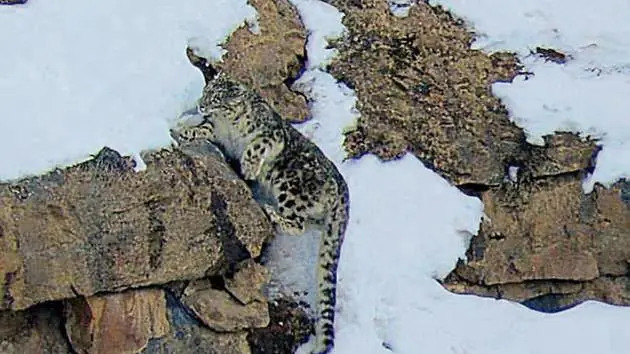The project to protect the 200 or so snow leopards in Himachal begins in 2019 and will be completed by 2024.
To protect endangered snow leopards and their habitats in the Trans and Greater Himalayan region with the cooperation of local residents, Rs 130 crores has been allocated for the Secure Himalaya Project.
Of the total expenses, the state and Centre will chip in Rs 109 crores while Rs 21 crores will be in the form of grant in aid. The project to protect the 200 or so snow leopards in Himachal begins in 2019 and will be completed by 2024.
The project will be implemented in tribal districts Lahaul-Spiti, Kinnaur and Pangi in Chamba district.
The project will be implemented in tribal districts Lahaul-Spiti, Kinnaur and Pangi in Chamba district.

A workshop was organised on Thursday by the wildlife wing of Himachal Pradesh forest department in which forest mnister Govind Thakur served as the chief guest. More than 100 stakeholders from Lahaul, Pangi and Kinnaur from line departments, officers from ministry of environment, forest and climate change, personnel of United Nations development programme (UNDP), representatives of non-government organisations, biodiversity management committees and mahila mandals active in these areas participated in the workshop.
Forest minister Govind Singh Thakur said, “For the Secure Himalaya Project cooperation of local residents is necessary. Locals have now stopped killing snow leopards and are helping in their conservation to promote tourism in Trans Himalayan region.”
A landscape approach will be adopted in this project conservation and management. This will be doen by ensuring that key biodiversity areas, buffer zones, corridors and areas outside traditional protected areas that are important for conservation of endangered species are managed in tandem with the sustainable use of these resources. This will be done while ensuring improvement and diversification of livelihood of a large number of local communities living in the region.
Despite the immense biological, socio-cultural and hydrological values of the Himalayan ecosystem, natural ecosystems are under severe threat from high dependence of local communities on natural resources, pressures from economic development, selective removal of medicinal and aromatic plants and the emerging threat of illegal wildlife trade and wildlife crime.
Landscape conservation management practices will be promoted under the project and special focus will be on providing innovative solutions to the threats and issues found in these landscapes for sustainable pastures and forest management, sustainable livelihoods and wildlife crime.




